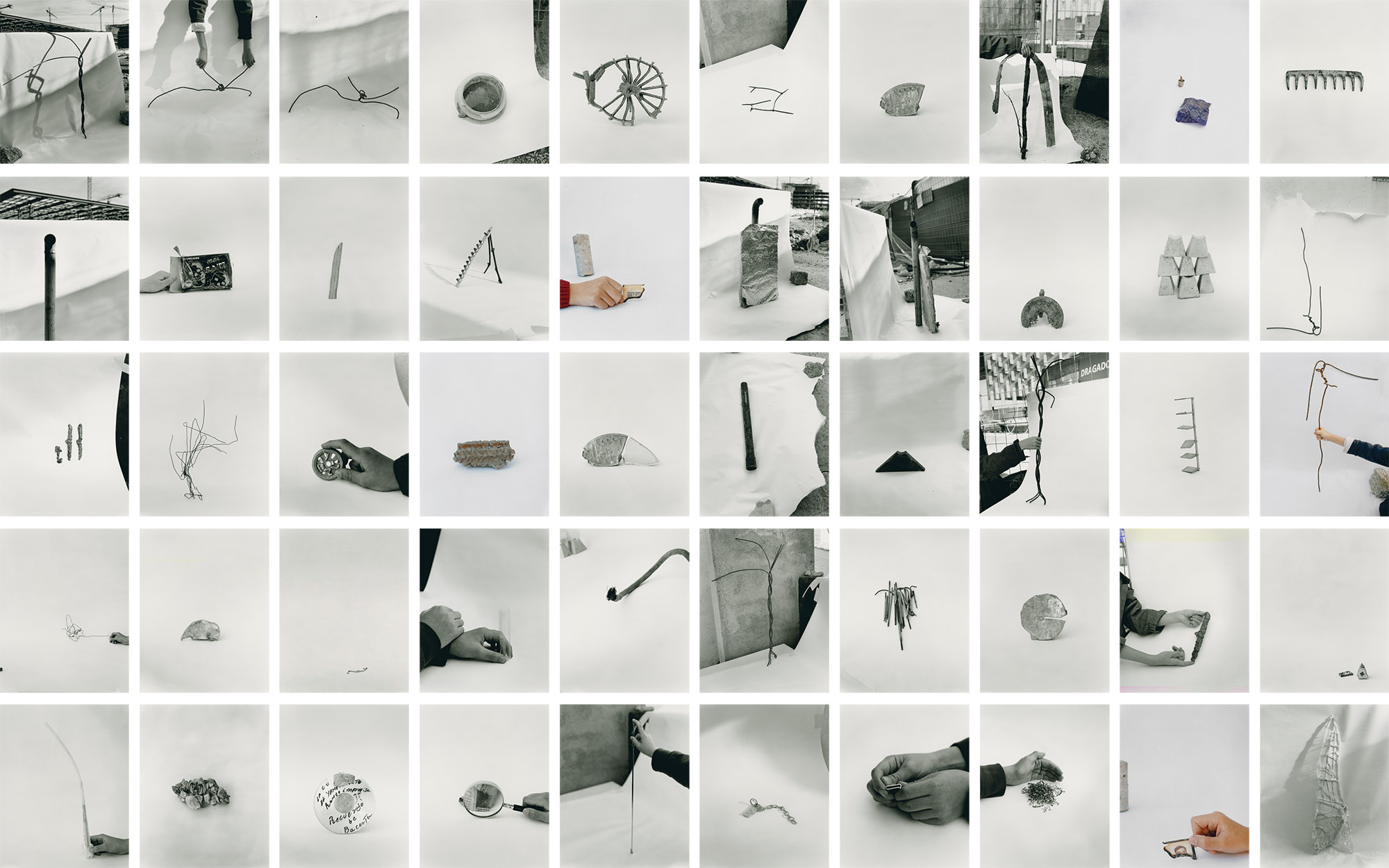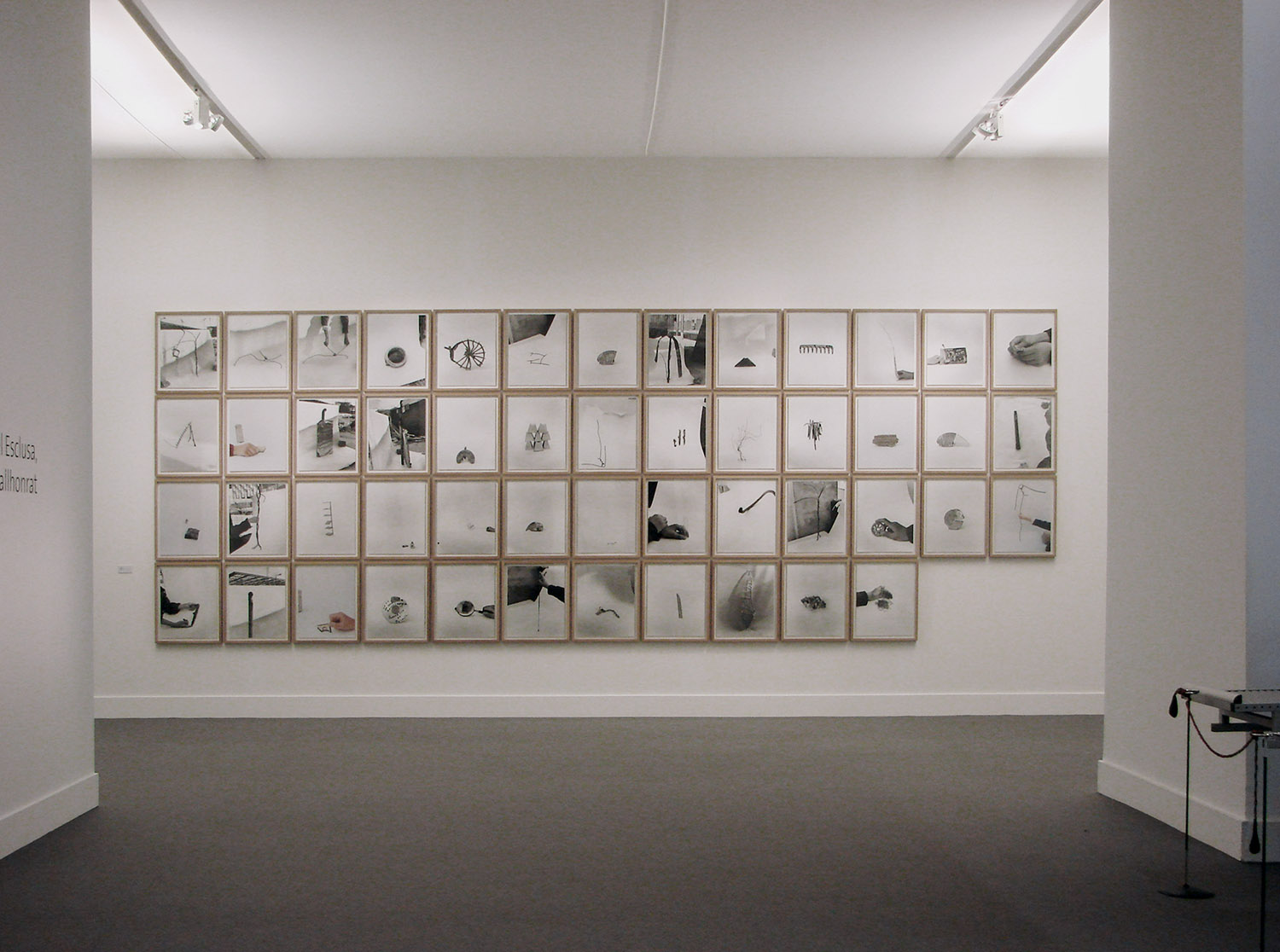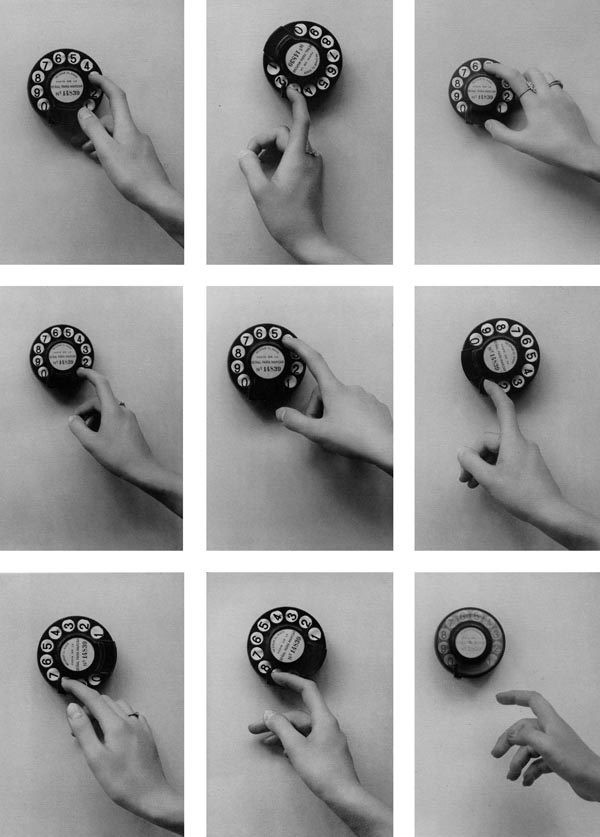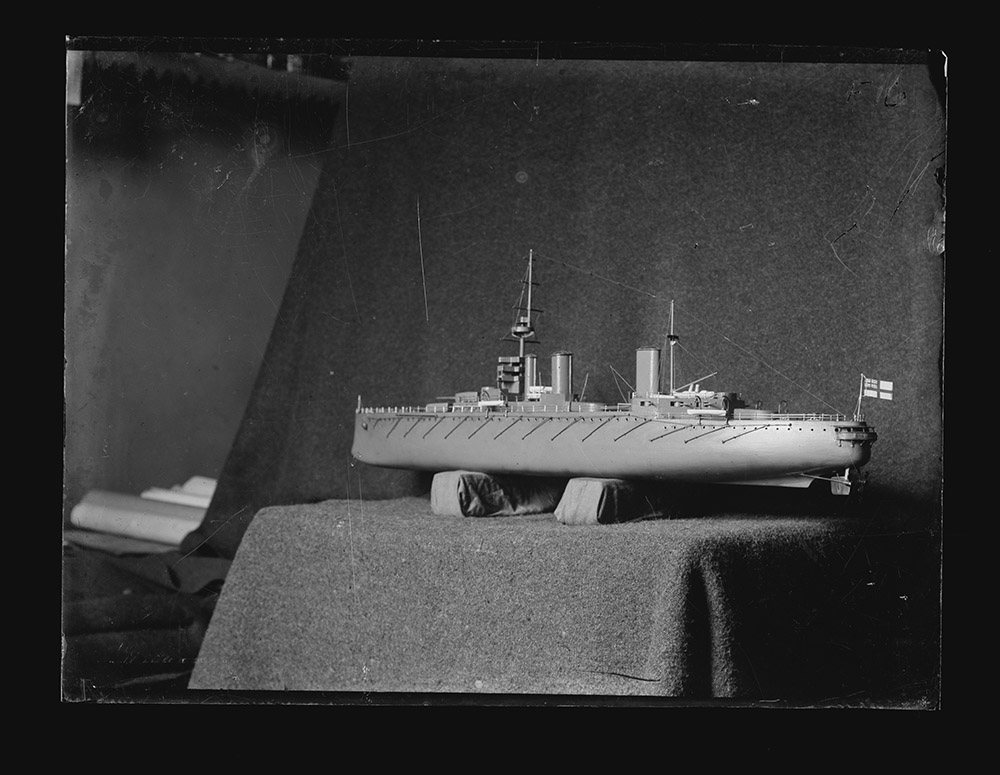© XAVIER RIBAS - Incidents (2005) 45 silver gelatin prints + 5 C-Type prints, 50 x 60 cm. Edition of 2 + 1 ap

[En]
"In the fifth century of our era Rome had the population of a village but the palaces of its emperors were still inhabitable."
Oswald Spengler, The Decline of the West (1917)
Incidents is inspired by the nine photographs ‘How to dial a telephone number. Photographic instructions’ from the collection of the Telefónica Foundation, made by Alfonso in 1926. The photographic image attempts to work, in Alfonso's as in here, like an instructions manual of a new technological artifact destined to change everyday habits, even though this set of instructions can not possibly help us understand the logic of its functioning, or its aspirations.
What are the components of this new technological apparatus? What is it made of this "future of work", as the company's corporate literature puts it? And, what is it that gets displaced, or eliminated, in terms of the past of the site, but also of possible futures? I proposed to make an archaeology of the building site. My nine year old child (indeed, we are talking about their future here), picked up fragments of materials and objects found in the building site and we photographed them on location. These found objects could either be from what was on this site before the building works began, as well as fragments of what the new building is made of, leftovers and residues of its fabrication. In some way, the child makes a reconnaissance of the future that is being put forward for him as a productive individual.
With the passage of time, technological artifacts seem to have dematerialised, as if it were impossible to fix the objects with the echo of their fabrication. Contemporary technological artifacts sit like outside of time, or their time doesn’t seem to coincide with our biological time. In the past, technological artifacts had an effect in social life through their actual familiarization in the everyday. Now, on the contrary, they are only assimilated as ruins: when we get the grips with them they are already obsolete. The feeling is that we can not catch up with technology, that we can only assimilate it as a relic: technological artifacts get scrapped while still new.
Incidents is about a suspended space and time. 'Before' and 'after' overlap each other, past of the place and future of the building: What will be here when this building will eventually collapse? The images try to make visible this state of suspension, they attempt to give it a form through the connexion of these apparently random objects, found as if by accident. In the background, the half built structures refer to the future building, just like a ruin refers to the building that has already collapsed. Displacement, construction and ruin, intermingled, incomprehensible.
----
[Cast] Incidentes se inspira en las nueve fotografías 'Cómo marcar un número de teléfono. Instrucciones fotográficas', de la colección de la Fundación Telefónica, realizadas por Alfonso en 1926. La imagen fotográfica pretende funcionar en ambos casos como un manual de instrucciones de un aparato tecnológico que está destinado a cambiar los hábitos cotidianos, tanto en el ámbito de lo privado como de lo público, aunque estas instrucciones no puedan llegar a hacernos comprender la lógica de su funcionamiento ni de sus aspiraciones.
¿Cuales són los componentes de este nuevo aparato tecnológico? ¿De qué está hecho este "futuro del trabajo" que se nos plantea con él? ¿Qué es lo que éste desplaza o elimina, tanto en términos de pasado como de futuros posibles? Proponemos hacer un levantamiento arqueológico del lugar a partir de la curiosidad de un niño (en definitiva estamos hablando de su futuro) que recoge fragmentos materiales en el lugar de la construcción, siguiendo criterios imprevisibles. Estos fragmentos pueden ser tanto de lo que había en el lugar antes de la construcción, como de lo que el mismo edificio se compone materialmente, sobras de la construcción. En cierta manera, el niño hace un reconocimiento de este futuro que se le propone como agente productivo.
Con el paso del tiempo se ha producido una desmaterialización del objeto tecnológico, como si fuera imposible fijar el objeto con el eco de su fabricación. El objeto tecnológico contemporaneo está como fuera del tiempo, o su tiempo no parece coincidir con nuestro tiempo biológico. Si bién anteriormente el objeto tecnológico se afirmaba socialmente a través de su familiarización en la vida cotidiana, en la actualidad, éste parece afirmarse solamente como ruina: cuando nos familiarizamos con él ya es obsoleto. La sensación es de que no damos abasto con la tecnología: solamente la podemos conocer, o reconocer, como reliquia: los objetos tecnológicos contemporaneos se desguazan nuevos.
Incidentes trata de un espacio y un tiempo suspendido, que ya no es 'antes' y todavía no es 'después'. Ámbos se confunden: pasado del lugar y futuro del edificio (¿qué habrá aquí cuando éste ya no esté?). Las imágenes hacen visible este estado de suspensión, lo configuran a partir de la conexión de estos elementos aparentemente casuales, hallados como por azar. En un segundo plano, las estructuras en construcción nos refieren al futuro edificio, de la misma manera que la ruina nos refiere a su pasado. Desplazamiento, construcción, y ruina, solapados, incomprensibles.
© Xavier Ribas (2005)
In 2004, Telefónica Foundation commissioned 8 photographers to work in Distrito C, the future site of the company's new corporate headquarters in Madrid. This work was produced in December 2005 while the site was still under construction. Distrito C. 8 Visiones was presented as a book and exhibition in Madrid in September 2007, feautirng all the commissions work by Sergio Belinchón, Bleda y Rosa, Jordi Bernadó, Manel Esclusa, Aitor Ortíz, Xavier Ribas, Montserrat Soto and Valentín Vallhonrat.
---

Incidents #1 to 50
---

Incidents, Installation telefónica Foundation, 2007
---

Alfonso, How to Dial a Telephone Number. Photographic Instructions. 1926
© Colección Fundación Telefónica

Anonymous glass negative c.1900s. Personal collection © Xavier Ribas
---
"Esta tensión con la historia también aparece en el trabajo de Xavier Ribas que, con una pieza múltiple de grandes dimensiones, lleva a cabo una arqueología de la violencia, del colapso que implica la irrupción de las macro construcciones corporativas en el territorio, y especialmente en el espacio social. Convertida en basura, los restos de la cultura barrida por el desarrollo tecnológico reaparecen en sus imágenes dando cuenta del proceso histórico en el que estamos envueltos."
[Alberto Martín, Arquitecturas Corporativas Ocho visiones. In Distrito C: Documentos de una transformación, Fundación Telefónica, Madrid 2005]